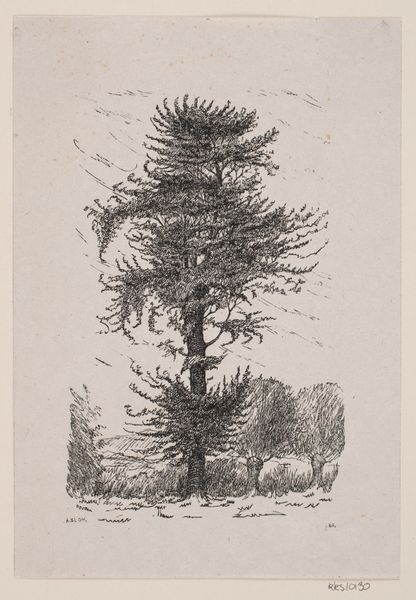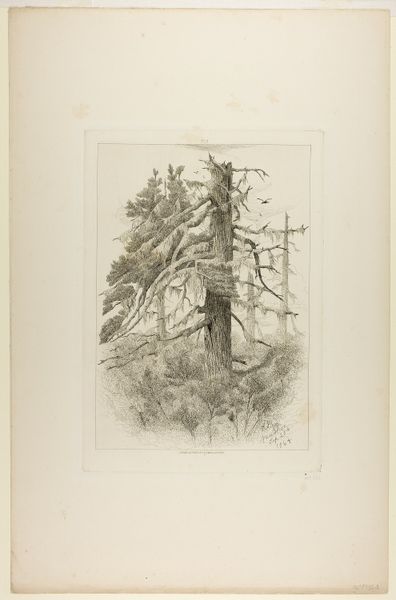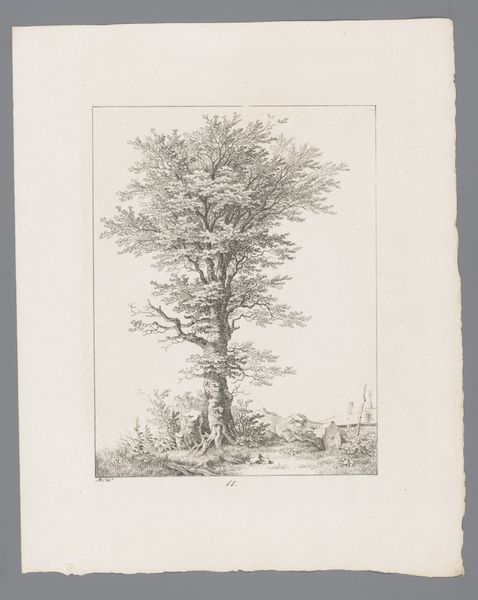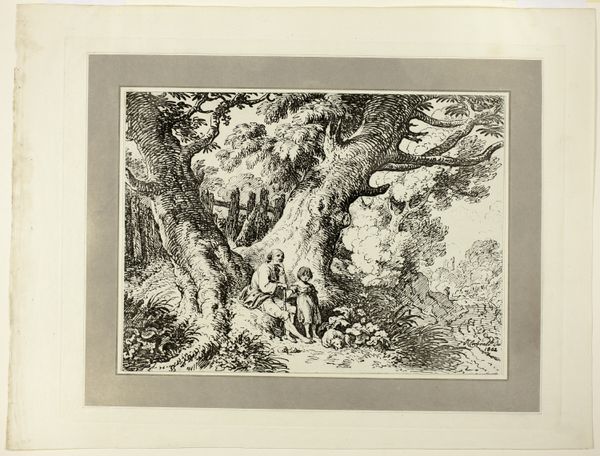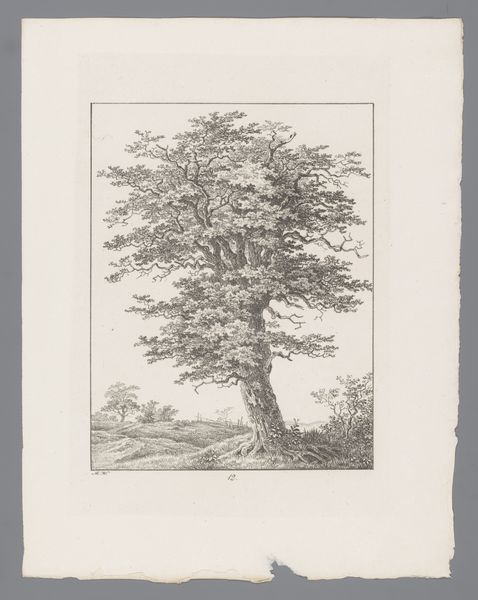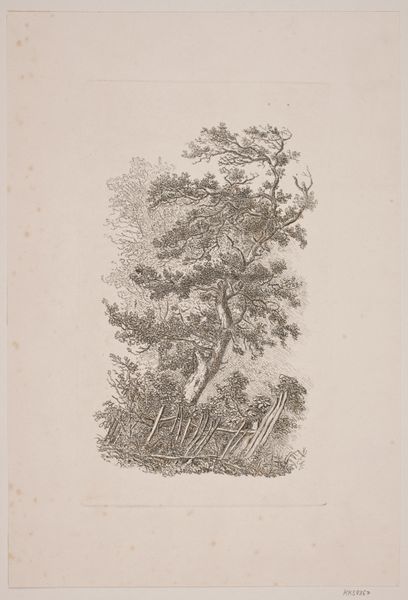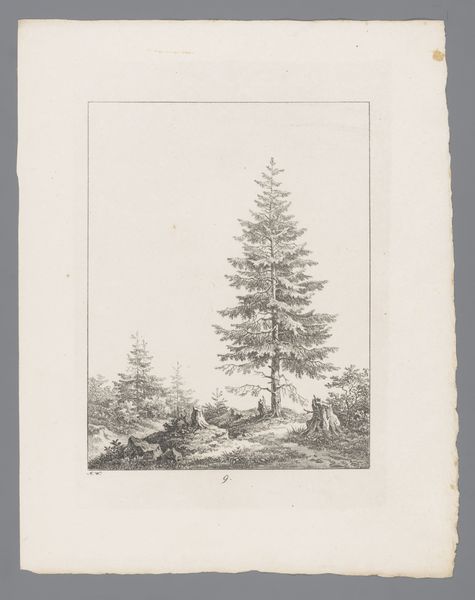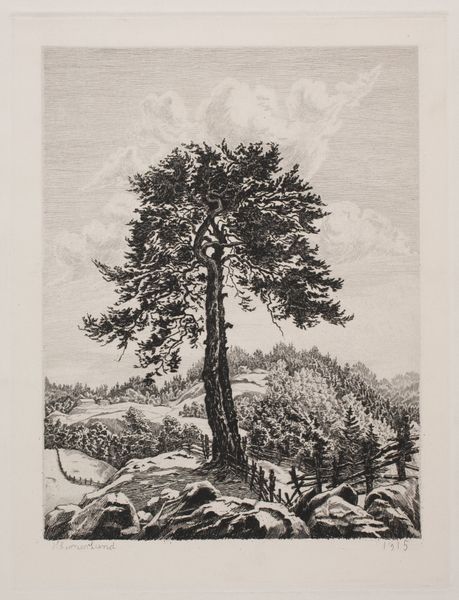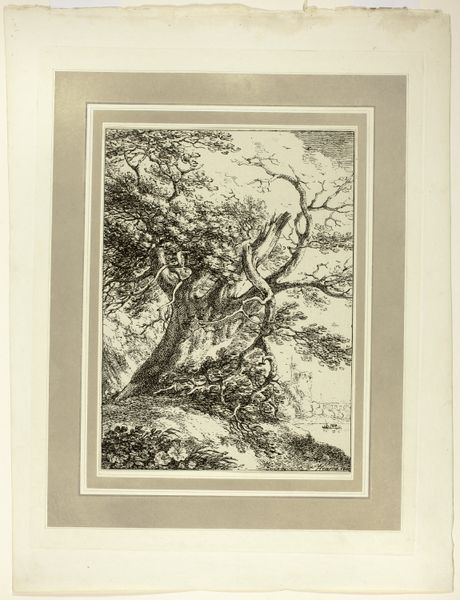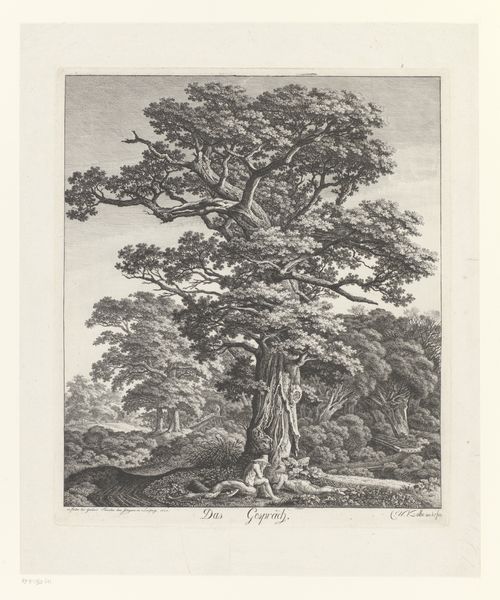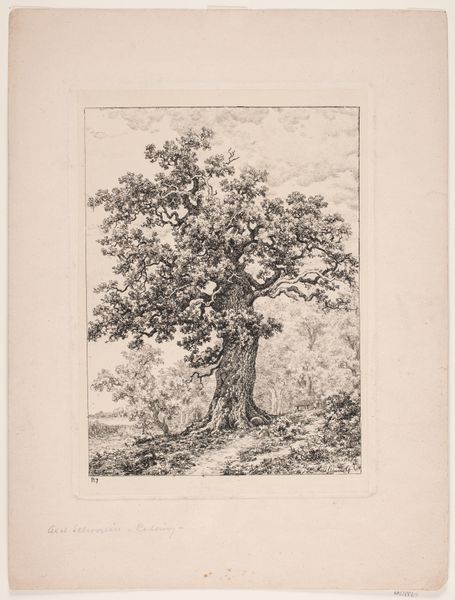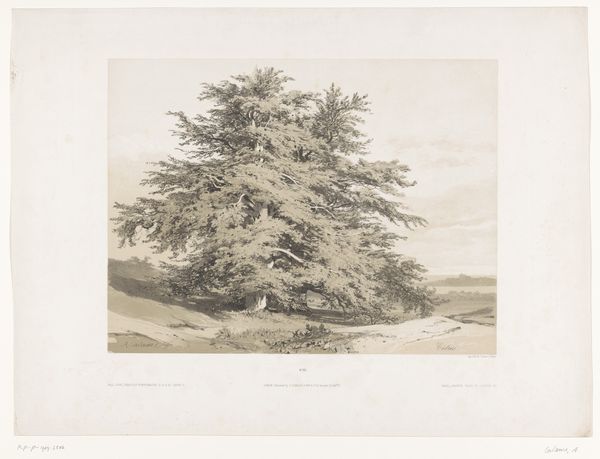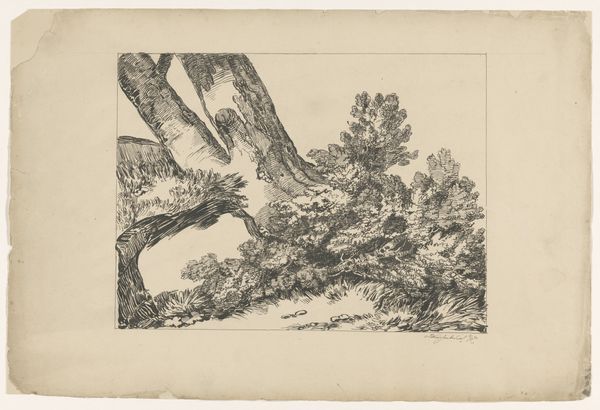
drawing, print, etching, paper
#
drawing
#
germany
# print
#
etching
#
landscape
#
paper
#
romanticism
#
history-painting
Dimensions: 553 × 431 mm (image); 611 × 465 mm (plate); 732 × 631 mm (sheet)
Copyright: Public Domain
Curator: Ah, another chance to lose ourselves in nature. Today we're observing "Fir Tree," an etching done on paper between 1801 and 1802 by Jacob Philipp Hackert. It now resides at The Art Institute of Chicago. Editor: It’s intensely detailed, almost obsessive in its depiction of the tree’s texture and branching. There’s a feeling of both monumentality and fragility, all rendered with such meticulous precision in etching. It almost feels…oppressive? Curator: I think the detail is quite amazing, actually. Considering etching is a subtractive process, the work Hackert had to put into carving those lines… well, it is hard to ignore. In terms of materials, that kind of paper at the time had a substantial rag content, making it receptive to the fine lines etched from the printing plate. You feel that labor in the visual texture, and in his clear romantic aesthetic. Editor: Labor is exactly what strikes me, not only from Hackert himself, but of nature too. This particular tree looks like it’s seen its share of storms and precarious inclines. Note the detail to the bark of the trunk, how time and place are rendered through the slow touch. And the figures in the landscape. Curator: Yes, there is something slightly dwarfed about those people next to that mighty tree. A bit theatrical, don’t you think? The way the landscape almost cradles them? Editor: Theatre, perhaps, but what kind of stage is this? What is Hackert’s purpose by placing them there? For me, it suggests the raw material as commodity: we're not only looking at Romanticism’s sublime awe of nature, but an artist pointing towards consumption of natural resources. It’s no coincidence that the German Romantic movement overlaps with massive industrial change in Europe, and his landscapes are made via human intervention onto zinc or copper plates, not pure natural touch. Curator: Hmm, food for thought, there. I came thinking it was about the wild soul of a tree, but now you’ve given me the specter of logging practices instead! Editor: Maybe it can be about both at the same time. Nature gives and humans act; a paradox on paper made with earthly means.
Comments
No comments
Be the first to comment and join the conversation on the ultimate creative platform.
